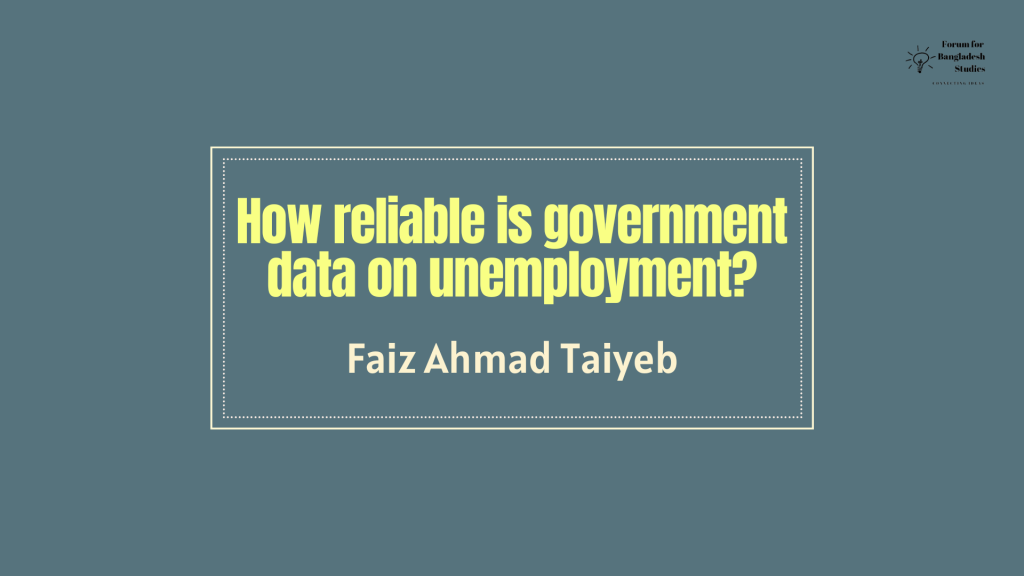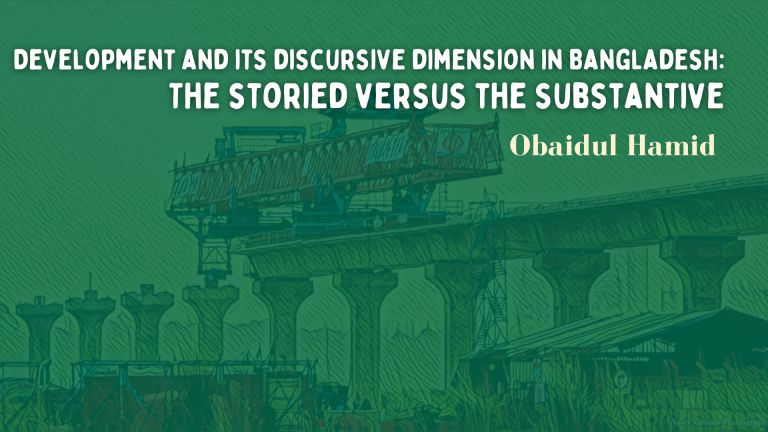According to the Bangladesh Bureau of Statistics’ (BBS) Labour Force Survey (LFS) 2022, the size of the country’s workforce as of 2022 is 71 million, up from 61 million in 2016-17. Considering this growth, it is fair to ask: can the BBS prove this on the employment contract issue? The answer is no. Can the BBS relate this to the increase in income tax return filings? What about the salary account or payroll increase in the banking sector? What are the positive correlations of this data with other economic indicators?
As per the LFS 2022, agriculture is still the main employment generator despite declining GDP share, now 11.7 percent (FY2022) dropping from 13.6 percent (FY2017), while employment share has increased to 45.33 percent (2022) from 40.6 percent (2016-17). The industry’s GDP share increased to 35.3 percent (FY2022) from 32.7 percent (FY2017), but its employment share declined to 17.02 percent from 20.4 percent. What a bizarre correlation of statistical data!
This simply indicates that either the GDP or the LFS data – or both – could have been manipulated. It also means a critical structural shift of employment from industry towards agriculture. Can this shift be backed with any policy reform and sectoral restructure? A labour force shift towards agriculture is impossible when industrial growth is the fastest. The industrial growth of nine percent caused a loss of 350,000 jobs, while 5.1 percent growth in the service sector created almost three million jobs, according to the survey.
This is not the only anomaly emerging out of the BBS statistics. According to the Bangladesh Economic Review 2020, the service sector’s contribution to the GDP is 51.29 percent. Per the latest BBS data, the service sector employs 37.65 percent of the workforce, down from 39 percent previously. The BBS has to find positive correlations for this as well, especially with the local, foreign and joint venture investment proposals registered with the Bangladesh Investment Development Authority (BIDA), given that local and foreign investments are currently more inclined towards the service sector.
According to another BBS survey published in 2022, titled the Survey of Manufacturing Industry, nearly 450,000 people joined employment in the manufacturing sector between FY2011 and FY2019. The BBS data shows industrial sector growth of more than 10 percent and manufacturing sector growth of about 12.5 percent in two years, even amid the Covid-19 pandemic. With this tremendous growth, how does manufacturing employment experience a sharp decline in the new BBS report – down from 20.4 percent to 17.02 percent? Which survey is correct, then?
The unemployment rate sees a positive trend, dropping to 3.6 percent in 2022 from 4.2 percent in 2016-17 – another absurd statistic. The BBS number of unemployed people in the country is 2.63 million, which was 2.7 million in 2016-17. Many have been laid off from their jobs during the growing economic crisis, so unemployment has risen, especially during the pandemic. Even now, as the Russia-Ukraine war continues, the taka’s devaluation of more than 20 percent against the US dollar, import ban, and the line of credit (LC) crisis, there is a stagnation in employment. Due to the ongoing power and energy crisis, production of major industries has fallen by 25-50 percent, according to a media report. Hence the BBS survey data is highly inconsistent with reality.
The BBS reference to the ILO definition of employment – at least one hour of work in a week – is inappropriate for Bangladesh, because it cannot prove weekly one-hour “wage” registration. In the West, almost every white-collar job is registered, so they count on such wage payment to measure pseudo-unemployment; it’s not the basis of counting unemployment rate. In Bangladesh, one is considered employed even if he or she does not get paid for productive work. This does not make any sense, because there is no criteria to measure this production; 89 percent of the informal labour sector does not have wage registration.
The ILO definition considers the effective value of labour, i.e. on the basis of whether it is possible to cover costs with income from a 40-hour week. Hence, the BBS data on unemployment is seriously questionable as the survey did not include the effective price-based definition. Such data will create confusion and misguide the government’s employment policies.
In the 2018 BCS preliminary exam, there were more than 200 applicants per position on average, with over five million young people applying for jobs in just six government sectors. On average, nearly 900 applicants contested for a position in the Department of Narcotics Control, and 1,400 in the Department of Food. In the last few BCS exams, nearly 32,000 educated individuals were “BCS unemployed” even though they passed the exams. According to a 2019 survey by Bangladesh Institute of Development Studies (BIDS), around 27 percent of SSC graduates in the country are unemployed – so are 28 percent of HSC graduates, 36 percent of graduates, and 34 percent of postgraduates; 33.19 percent of the educated population was unemployed.
The fact is, owing to Covid-induced unemployment as well as continuous price hikes of energy and commodities due to high inflation, a large number of people have moved to the villages as they are no longer able to afford the living costs in the cities. This migrant labour force has been shown as employed in the BBS survey. This is not acceptable.
According to Dr Birupaksha Paul, former chief economist of the Bangladesh Bank, “No country has as poor quality data as Bangladesh. It may sound awkward, but the truth is the bureau’s data is of the lowest quality.” Be it the per capita income, GDP calculation, inflation measurement, inflation adjustment in GDP and wages, population, reserve counting or employment data – in every indicator, there are traces of data manipulation. The per capita income is calculated by dividing the country’s annual gross income by its population. The BBS has been accused of understating population and inflating the average per capita income.
Childbirth and population growth rates do not correlate with school enrolment. In many cases, BBS data cannot be correlated with other data sets. It is not correlated to the country’s domestic and foreign investment flows, inflation, employment, international recessions and booms. It is not related to the rise and fall in fuel prices, agricultural production, and natural disasters. If this continues, national policies will not be effective as they are formulated typically based on BBS data.
There is a criticism that while numerical growth in the data better reflects government development indicators, the BBS data tends to go steadily upwards in a stairwell pattern. And where decreasing numerical values mean improvement, BBS data continues to descend like a staircase. This mystery needs to be unravelled.




